-
 Bitcoin
Bitcoin $106,754.6083
1.33% -
 Ethereum
Ethereum $2,625.8249
3.80% -
 Tether USDt
Tether USDt $1.0001
-0.03% -
 XRP
XRP $2.1891
1.67% -
 BNB
BNB $654.5220
0.66% -
 Solana
Solana $156.9428
7.28% -
 USDC
USDC $0.9998
0.00% -
 Dogecoin
Dogecoin $0.1780
1.14% -
 TRON
TRON $0.2706
-0.16% -
 Cardano
Cardano $0.6470
2.77% -
 Hyperliquid
Hyperliquid $44.6467
10.24% -
 Sui
Sui $3.1128
3.86% -
 Bitcoin Cash
Bitcoin Cash $455.7646
3.00% -
 Chainlink
Chainlink $13.6858
4.08% -
 UNUS SED LEO
UNUS SED LEO $9.2682
0.21% -
 Avalanche
Avalanche $19.7433
3.79% -
 Stellar
Stellar $0.2616
1.64% -
 Toncoin
Toncoin $3.0222
2.19% -
 Shiba Inu
Shiba Inu $0.0...01220
1.49% -
 Hedera
Hedera $0.1580
2.75% -
 Litecoin
Litecoin $87.4964
2.29% -
 Polkadot
Polkadot $3.8958
3.05% -
 Ethena USDe
Ethena USDe $1.0000
-0.04% -
 Monero
Monero $317.2263
0.26% -
 Bitget Token
Bitget Token $4.5985
1.68% -
 Dai
Dai $0.9999
0.00% -
 Pepe
Pepe $0.0...01140
2.44% -
 Uniswap
Uniswap $7.6065
5.29% -
 Pi
Pi $0.6042
-2.00% -
 Aave
Aave $289.6343
6.02%
What does it mean that the PSY psychological line is lower than 25? Can I buy the bottom?
The PSY indicator below 25 signals oversold crypto conditions, hinting at potential reversals but requiring confirmation for safer trades.
Jun 16, 2025 at 01:07 pm
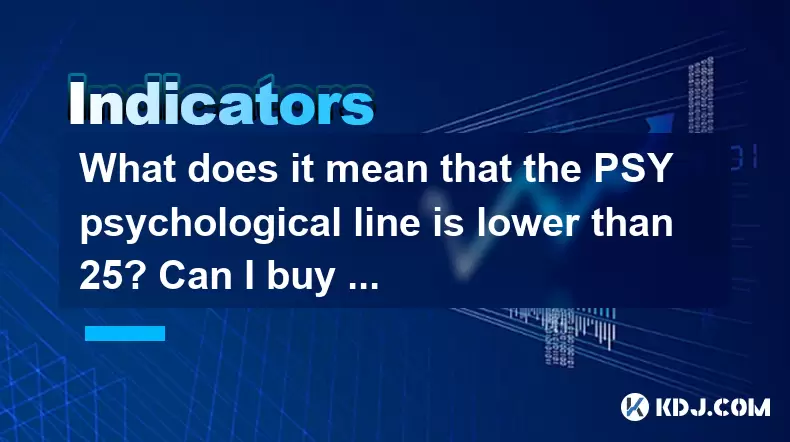
Understanding the PSY Psychological Line Indicator
The PSY psychological line indicator, often referred to as the Psychological Line Index, is a technical analysis tool used in financial markets, including cryptocurrency trading. It measures market sentiment by analyzing the number of rising periods (bullish) versus total periods over a specified time frame. Typically, the default setting for the PSY index is 12 days, although traders can adjust this parameter based on their strategies.
When the PSY value drops below 25, it indicates that the market is experiencing a strong bearish sentiment. This level is considered extremely oversold, suggesting that the majority of recent price movements have been downward. In traditional stock and forex markets, such levels are often seen as potential reversal zones where buying pressure may start to outweigh selling pressure.
What Does a PSY Value Below 25 Mean?
A PSY reading below 25 implies that the asset has been under consistent selling pressure for the selected period. In the context of cryptocurrencies, which are known for their volatility and emotional trading patterns, such a low reading could indicate panic selling or capitulation among investors.
- The psychological threshold of 25 acts as a key support level in sentiment-based trading.
- When the indicator remains below 25 for multiple periods, it suggests that the market is not only oversold but also losing momentum rapidly.
- Traders often interpret this as a sign that the downtrend might be exhausted and that a potential reversal or bounce could occur.
However, it's crucial to understand that while the PSY indicator reflects sentiment, it doesn't guarantee price reversals. Markets can remain irrational longer than expected, especially during extreme conditions like regulatory crackdowns or macroeconomic shocks.
Can I Buy the Bottom Based on PSY < 25?
Buying the bottom solely based on a PSY value below 25 is risky and not advisable without additional confirmation signals. While this level often marks oversold conditions, entering a trade at this point requires careful consideration of other factors:
- Confirm with volume indicators: If volume starts increasing alongside a PSY reading below 25, it may signal that new buyers are stepping in.
- Look for price action reversals: Candlestick patterns such as bullish engulfing, hammer, or morning star can provide stronger evidence of a possible trend change.
- Combine with moving averages or RSI: Cross-checking with tools like the Relative Strength Index (RSI) or moving average crossovers can help filter false signals.
In volatile crypto markets, relying on one indicator alone increases the chance of making premature trades. Therefore, traders should use the PSY indicator as part of a broader analytical framework rather than an isolated decision-making tool.
How to Use the PSY Indicator in Cryptocurrency Trading
To effectively incorporate the PSY psychological line indicator into your cryptocurrency trading strategy, follow these steps:
- Add the PSY indicator to your charting platform: Most platforms like TradingView or Binance’s native tools offer the PSY indicator as part of their technical analysis suite.
- Set the period: The default is usually 12, but some traders use 6 or 24 depending on their trading style—short-term or long-term.
- Identify key thresholds: Watch for readings below 25 (oversold) and above 75 (overbought).
- Look for divergences: If the price continues to fall while the PSY starts to rise, it may signal hidden strength.
- Combine with support/resistance levels: A PSY reading below 25 near a major support zone can increase the probability of a successful trade setup.
By integrating these practices, traders can better assess whether a potential buy opportunity exists when the PSY line dips below 25.
Common Mistakes When Interpreting PSY < 25
Traders often make several critical errors when interpreting the PSY psychological line below 25:
- Assuming immediate reversal: Just because the market is oversold doesn’t mean it will reverse immediately. Bear markets can stay oversold for extended periods.
- Ignoring trend direction: Entering a long position in a strong downtrend based only on PSY < 25 can lead to significant losses.
- Neglecting fundamental factors: Crypto markets are highly sensitive to news, regulations, and macro trends. Ignoring these can result in poor timing decisions.
- Failing to manage risk: Even if the PSY suggests a potential reversal, improper stop-loss placement or over-leveraging can still lead to failure.
Avoiding these pitfalls requires discipline, patience, and a multi-dimensional approach to trading.
Frequently Asked Questions
Q: Is the PSY indicator more effective in certain cryptocurrencies?
Yes, the PSY indicator tends to perform better in highly liquid and actively traded cryptocurrencies like Bitcoin or Ethereum due to more reliable sentiment signals. Less liquid altcoins may produce erratic readings.
Q: Can the PSY indicator give false signals?
Absolutely. Like any technical indicator, the PSY psychological line can generate false signals, especially during choppy or sideways markets. Always combine it with other forms of analysis.
Q: How does the PSY indicator differ from RSI?
While both measure overbought/oversold conditions, the PSY indicator focuses purely on price direction (up/down periods), whereas RSI considers the speed and magnitude of price changes.
Q: Should I always wait for PSY to cross above 25 before buying?
Not necessarily. Some traders look for divergence or turning points before the crossover occurs. However, doing so increases risk, and proper risk management must be applied.
Disclaimer:info@kdj.com
The information provided is not trading advice. kdj.com does not assume any responsibility for any investments made based on the information provided in this article. Cryptocurrencies are highly volatile and it is highly recommended that you invest with caution after thorough research!
If you believe that the content used on this website infringes your copyright, please contact us immediately (info@kdj.com) and we will delete it promptly.
- 2025-W Uncirculated American Gold Eagle and Dr. Vera Rubin Quarter Mark New Products
- 2025-06-13 06:25:13
- Ruvi AI (RVU) Leverages Blockchain and Artificial Intelligence to Disrupt Marketing, Entertainment, and Finance
- 2025-06-13 07:05:12
- H100 Group AB Raises 101 Million SEK (Approximately $10.6 Million) to Bolster Bitcoin Reserves
- 2025-06-13 06:25:13
- Galaxy Digital CEO Mike Novogratz Says Bitcoin Will Replace Gold and Go to $1,000,000
- 2025-06-13 06:45:13
- Trust Wallet Token (TWT) Price Drops 5.7% as RWA Integration Plans Ignite Excitement
- 2025-06-13 06:45:13
- Ethereum (ETH) Is in the Second Phase of a Three-Stage Market Cycle
- 2025-06-13 07:25:13
Related knowledge
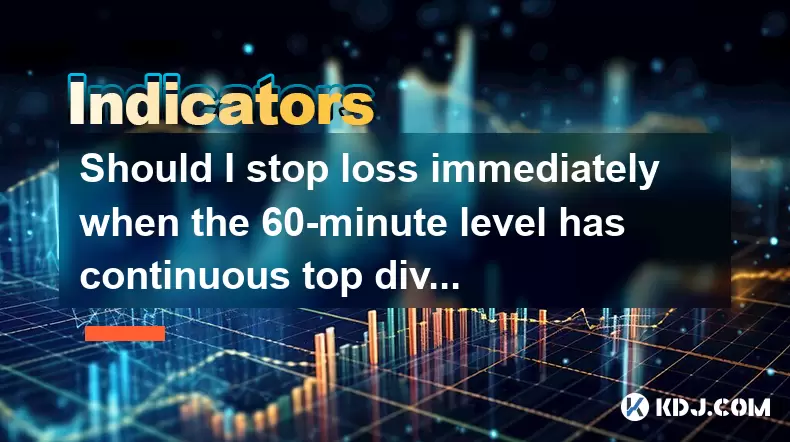
Should I stop loss immediately when the 60-minute level has continuous top divergence?
Jun 17,2025 at 05:28pm
Understanding Top Divergence in the 60-Minute ChartIn cryptocurrency trading, top divergence refers to a technical signal where the price of an asset makes higher highs while the indicator (often RSI or MACD) makes lower lows. This is commonly interpreted as a sign of weakening momentum and potential reversal. When this occurs on the 60-minute chart, it...
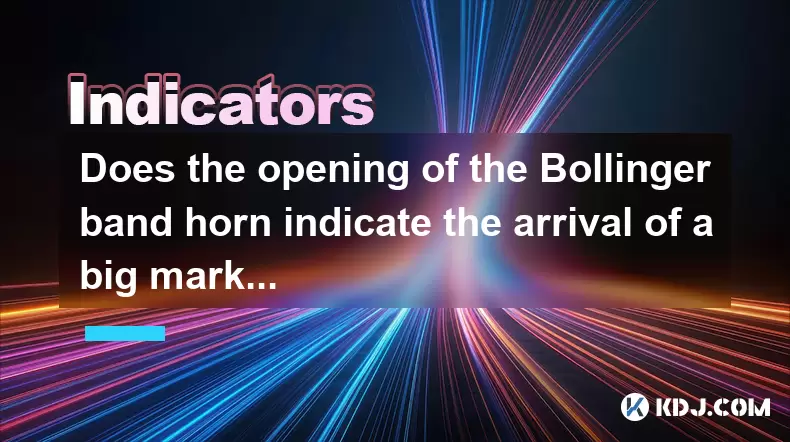
Does the opening of the Bollinger band horn indicate the arrival of a big market?
Jun 17,2025 at 06:28pm
Understanding the Bollinger Bands and Their StructureBollinger Bands are a widely used technical analysis tool in the cryptocurrency market, developed by John Bollinger. They consist of three lines: a simple moving average (SMA), typically set at 20 periods, and two standard deviation bands above and below this SMA. These bands dynamically expand and co...
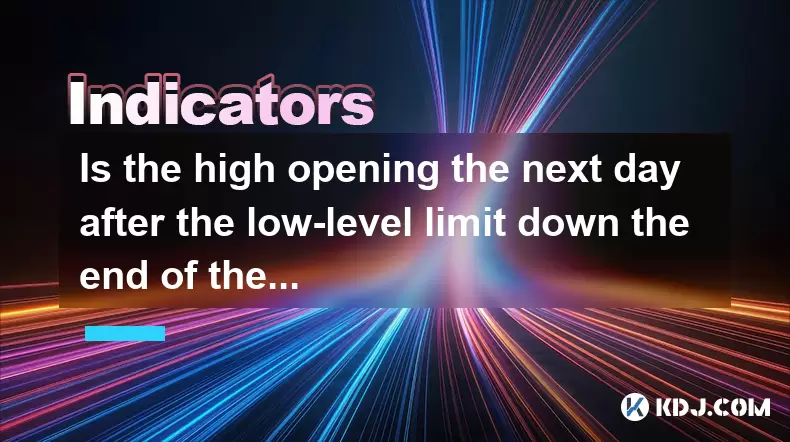
Is the high opening the next day after the low-level limit down the end of the wash?
Jun 17,2025 at 05:57pm
Understanding the Concept of a Limit Down and Its ImplicationsIn the world of cryptocurrency trading, a limit down refers to a situation where the price of a digital asset drops sharply, reaching its maximum allowable decline within a specific time frame. This mechanism is often seen on exchanges that implement daily price limits to prevent excessive vo...
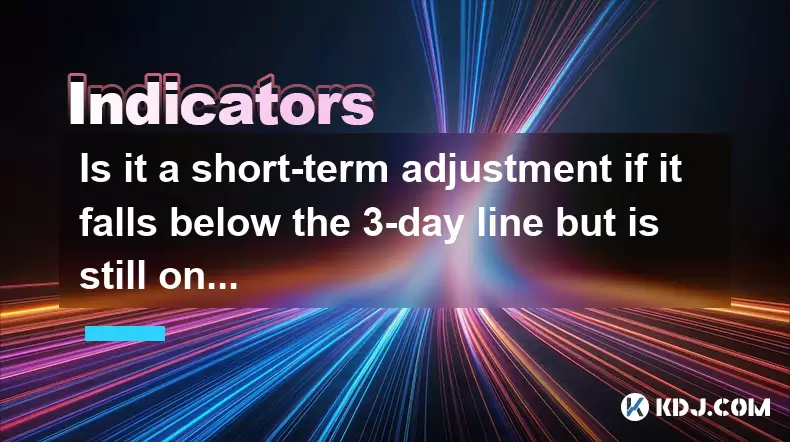
Is it a short-term adjustment if it falls below the 3-day line but is still on the 10-day line?
Jun 17,2025 at 04:07pm
Understanding the 3-Day and 10-Day Moving AveragesIn cryptocurrency trading, moving averages are essential tools for gauging trend strength and potential reversals. The 3-day moving average is a short-term indicator that reflects recent price action with minimal lag, making it highly sensitive to sudden market shifts. In contrast, the 10-day moving aver...
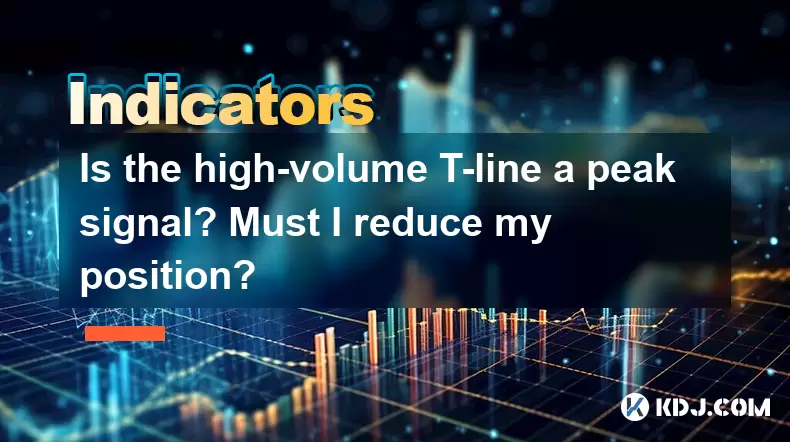
Is the high-volume T-line a peak signal? Must I reduce my position?
Jun 17,2025 at 06:07pm
Understanding the T-Line Pattern in Cryptocurrency TradingIn cryptocurrency trading, technical patterns are frequently used by traders to anticipate price movements. One such pattern is the T-line, which appears on candlestick charts and is characterized by a long upper or lower shadow with little or no body. A high-volume T-line occurs when this patter...
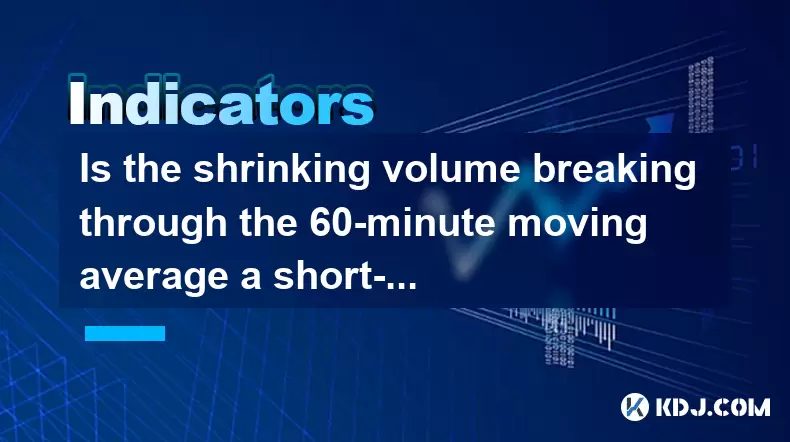
Is the shrinking volume breaking through the 60-minute moving average a short-term weakness? Should I run?
Jun 17,2025 at 06:21pm
Understanding the 60-Minute Moving Average in Cryptocurrency TradingIn cryptocurrency trading, the 60-minute moving average is a popular technical indicator used by traders to assess short-term trends. This metric calculates the average price of an asset over the last 60 minutes and updates with each passing minute. Traders often use it to identify pote...

Should I stop loss immediately when the 60-minute level has continuous top divergence?
Jun 17,2025 at 05:28pm
Understanding Top Divergence in the 60-Minute ChartIn cryptocurrency trading, top divergence refers to a technical signal where the price of an asset makes higher highs while the indicator (often RSI or MACD) makes lower lows. This is commonly interpreted as a sign of weakening momentum and potential reversal. When this occurs on the 60-minute chart, it...

Does the opening of the Bollinger band horn indicate the arrival of a big market?
Jun 17,2025 at 06:28pm
Understanding the Bollinger Bands and Their StructureBollinger Bands are a widely used technical analysis tool in the cryptocurrency market, developed by John Bollinger. They consist of three lines: a simple moving average (SMA), typically set at 20 periods, and two standard deviation bands above and below this SMA. These bands dynamically expand and co...

Is the high opening the next day after the low-level limit down the end of the wash?
Jun 17,2025 at 05:57pm
Understanding the Concept of a Limit Down and Its ImplicationsIn the world of cryptocurrency trading, a limit down refers to a situation where the price of a digital asset drops sharply, reaching its maximum allowable decline within a specific time frame. This mechanism is often seen on exchanges that implement daily price limits to prevent excessive vo...

Is it a short-term adjustment if it falls below the 3-day line but is still on the 10-day line?
Jun 17,2025 at 04:07pm
Understanding the 3-Day and 10-Day Moving AveragesIn cryptocurrency trading, moving averages are essential tools for gauging trend strength and potential reversals. The 3-day moving average is a short-term indicator that reflects recent price action with minimal lag, making it highly sensitive to sudden market shifts. In contrast, the 10-day moving aver...

Is the high-volume T-line a peak signal? Must I reduce my position?
Jun 17,2025 at 06:07pm
Understanding the T-Line Pattern in Cryptocurrency TradingIn cryptocurrency trading, technical patterns are frequently used by traders to anticipate price movements. One such pattern is the T-line, which appears on candlestick charts and is characterized by a long upper or lower shadow with little or no body. A high-volume T-line occurs when this patter...

Is the shrinking volume breaking through the 60-minute moving average a short-term weakness? Should I run?
Jun 17,2025 at 06:21pm
Understanding the 60-Minute Moving Average in Cryptocurrency TradingIn cryptocurrency trading, the 60-minute moving average is a popular technical indicator used by traders to assess short-term trends. This metric calculates the average price of an asset over the last 60 minutes and updates with each passing minute. Traders often use it to identify pote...
See all articles

























































































